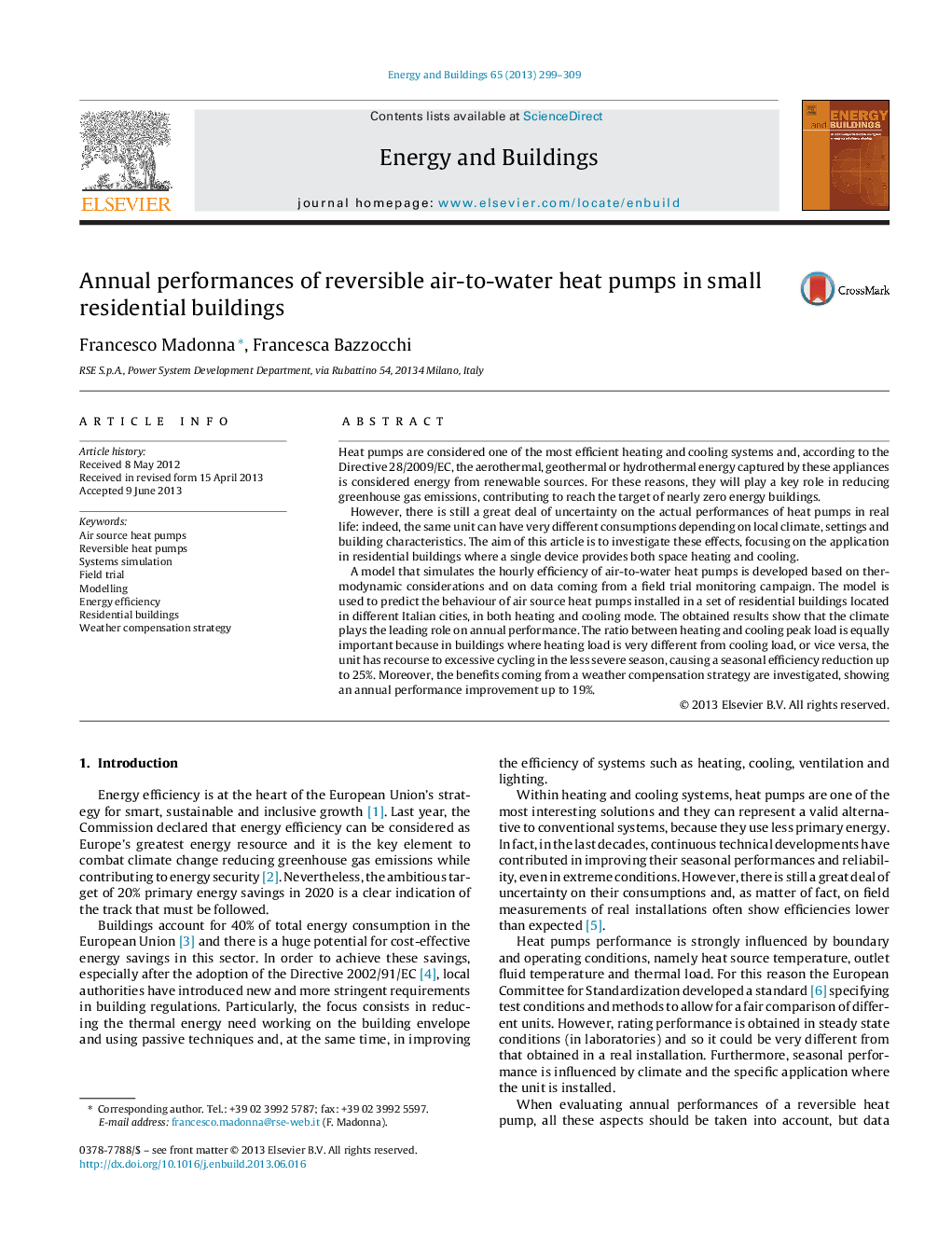| کد مقاله | کد نشریه | سال انتشار | مقاله انگلیسی | نسخه تمام متن |
|---|---|---|---|---|
| 263214 | 504068 | 2013 | 11 صفحه PDF | دانلود رایگان |

• We summarize the results of a reversible heat pump field trial.
• We develop a model simulating hourly performance of air-to-water heat pumps.
• We provide annual and seasonal performances of units installed in residential buildings.
• How the climate and the building influence heat pump performance is discussed.
• The benefits of a weather compensation strategy are evaluated.
Heat pumps are considered one of the most efficient heating and cooling systems and, according to the Directive 28/2009/EC, the aerothermal, geothermal or hydrothermal energy captured by these appliances is considered energy from renewable sources. For these reasons, they will play a key role in reducing greenhouse gas emissions, contributing to reach the target of nearly zero energy buildings.However, there is still a great deal of uncertainty on the actual performances of heat pumps in real life: indeed, the same unit can have very different consumptions depending on local climate, settings and building characteristics. The aim of this article is to investigate these effects, focusing on the application in residential buildings where a single device provides both space heating and cooling.A model that simulates the hourly efficiency of air-to-water heat pumps is developed based on thermodynamic considerations and on data coming from a field trial monitoring campaign. The model is used to predict the behaviour of air source heat pumps installed in a set of residential buildings located in different Italian cities, in both heating and cooling mode. The obtained results show that the climate plays the leading role on annual performance. The ratio between heating and cooling peak load is equally important because in buildings where heating load is very different from cooling load, or vice versa, the unit has recourse to excessive cycling in the less severe season, causing a seasonal efficiency reduction up to 25%. Moreover, the benefits coming from a weather compensation strategy are investigated, showing an annual performance improvement up to 19%.
Journal: Energy and Buildings - Volume 65, October 2013, Pages 299–309